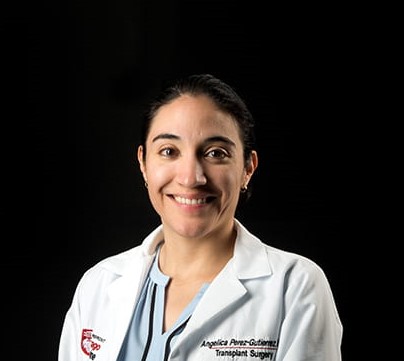
Advantages of simultaneous kidney and pancreas transplantation in selected patients with type 2 Diabetes Mellitus: A single-center study
Braden Juengel1, Piotr Bachul1, Yousuf Kyeso1, Angelica Perez Guttierez1, Arielle Cimeno1, Ashley Suah1, Alex Gaffan1, Sambhavi Krishnamoorthy1, Patrick Cunningham1, Yvonne El Kassis1, Michelle Josephson1, Beatrice Conception1, John J Fung1, Rolf Barth1, Piotr Witkowski1.
1Transplantation Institute, University of Chicago, Chicago, IL, United States
Objective: While simultaneous pancreas and kidney transplantation (SPK) is well-established for patients with end-stage renal disease (ESRD) and type 1 diabetes mellitus (T1DM), its efficacy in patients with type 2 diabetes mellitus (T2DM) remains less clear as the selection criteria allowing for favorable outcomes are not well established. This study aims to evaluate the outcomes of SPK in patients with T2DM at our institution.
Methods: Nineteen patients with T2DM and chronic kidney disease (CKD) were included in this study. Demographic and clinical data were collected, and SPK procedures were performed according to standard protocols with systemic venous and enteric duodenal drainage. Postoperative outcomes, including graft function and complications, were assessed. Patients were followed up to 4 years post-transplantation.
Results: They were 14 men and 5 females in median age of 47 (32-60). Most of the patients required hemodialysis -74%, or peritoneal dialysis- 21%. The median BMI was 26 (19-33), weight 81kg (51-102), fasting c- peptide 1.93pmol/ml (0.21-6.46), and HbA1c 7.2 (5.4-14.6). Median insulin requirements were 33 units per day (4-80). The median length of hospital stay was 11 days (8-25). Pancreas graft thrombosis requiring surgical excision occurred in 10% of patients. Additional complications, such as bleeding or abscess, necessitated re-laparotomy in 16% of patients. More than half of the patients experienced complications requiring hospital readmission. However, all patients who maintained pancreas graft function showed improvement in blood glucose control, with none requiring chronic insulin therapy post-surgery. HbA1c dropped after transplanttion in 81% of patients to median 5.5 (4.7-7.1) and increased up to 6.1- 6.5 in remaining 19% of patients. Fasting c-peptide increased in 70%, and decreased in 30% of patients.
Kidney graft function remained stable in all patients, with no instances of delayed graft function or graft loss. Moreover, the waiting time for SPK was significantly shorter than that for kidney transplantation alone in our region: 80% of patients waited less than 3 years, 63% less than 2 years and 26% less than one 1 year.
Conclusion: Simultaneous pancreas and kidney transplantation in patients with T2DM offers several benefits, including expedited access to high-quality kidney grafts, improved long-term blood glucose control without the need for insulin therapy, and preservation of kidney graft function. However, this approach is associated with an increased risk of complications than a kidney transplant alone, necessitating more frequent hospital readmission and reoperation.
[1] pancreas transplantation
[2] kidney transplantation
[3] SPK
[4] T2DM
[5] diabetes
